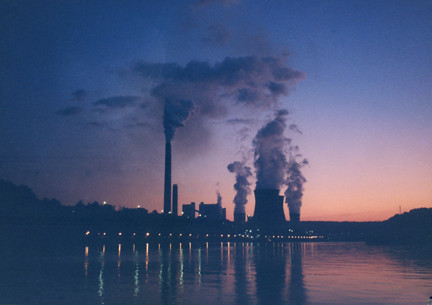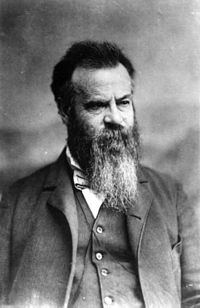The Sierra Club PA Chapter joined the letter below, asking members of the PA House to oppose HB 965, expected to come up for a vote on second consideration today:
October 16, 2015
Re: Opposition to HB 965 (P.N. 1885) and SB 562
Dear Representative:
On behalf of the hundreds of thousands of members we represent in Pennsylvania, the undersigned respectfully request that you OPPOSE House Bill 965 (P.N. 1885), which is scheduled for second consideration this Monday, October 19.
You may hear that HB 965 (and its Senate counterpart, SB 562) is necessary for legislative “oversight.” In reality, this legislation would hamstring the current independent and bipartisan process for updating state agency regulations by giving standing committees of the legislature unilateral control to hold up proposals they dislike. At the same time, HB 965 will make Pennsylvania’s regulatory rulemaking process much less transparent to the general public.
At best, these bills are solutions in search of a problem; at worst, they represent legislative overreach that would politicize Pennsylvania’s rulemaking process and take the “independent” out of the Commonwealth's Independent Regulatory Review Commission (IRRC).
We are specifically concerned with two particular changes proposed by HB 965 and SB 562.
First, by enabling standing committees of the General Assembly to repeatedly delay IRRC votes on proposed regulations (and introducing other delays), HB 965 and SB 562 would further complicate an already complicated process – and effectively transfer executive powers to small groups of legislators.
By way of background, one of the stated intentions of the Regulatory Review Act is “to provide ultimate review of regulations by the General Assembly” (see section 2(a)). That step already exists in our current IRRC process. After the IRRC votes on a regulatory proposal by a state agency, legislative standing committees already have the power to further review or disapprove the proposal. When a committee invokes its power to review or disapprove, the regulatory proposal is stayed for fourteen days, so that it can be brought to a vote before the full legislature. For three decades, this process has given the General Assembly ample time to review new regulations proposed by state agencies.
HB 965 and SB 562 would turn this orderly process on its head by (among other things) giving legislative committees the additional power to “further review” proposed regulations before the IRRC ever votes – and to do so repeatedly. By exercising this power, a standing committee could postpone a vote by IRRC indefinitely, and thereby effectively block the executive rulemaking process. In addition, the bills would needlessly inflate several post-vote periods during which the legislature can take action against proposed regulations. These changes would only serve to create bureaucracy and red tape, hinder the passage of much-needed regulations (which are often necessary to implement federal law or statutes passed by the General itself has), and subject the formerly independent IRRC to the control of small groups of legislators.
Second, the bills would block publication of agency “Statements of Purpose” (SOP) in the Pennsylvania Bulletin. The only effect of this prohibition would be to make it harder for your constituents to understand proposed regulatory changes. The sponsorship memo for SB 562 suggests that blocking Bulletin publication will prevent courts from interpreting SOPs in a way that is inconsistent with the regulations or the intent of the General Assembly. But courts do not review and interpret SOPs because they are printed in the Bulletin; they do so because SOPs are drafted by agencies and introduced into evidence in judicial proceedings. Blocking Bulletin publication will prevent neither of these things. It will only eviscerate the ability of the public to learn about and comment on new regulations.
Please tell your leadership that you OPPOSE HB 965 and vote to keep the “independent” in the Independent Regulatory Review Commission.
Thank you for in advance for standing up for the integrity and transparency of our regulatory process and OPPOSING HB 965.
Sincerely,
David Masur, Executive Director Joanne Kilgour, Chapter Director
PennEnvironment Sierra Club, Pennsylvania Chapter
Joseph Otis Minott, Executive Director Matthew Stepp, Policy Director
Clean Air Council Citizens for Pennsylvania’s Future
Jackson Morris, Director Eastern Energy Gretchen Dahlkemper, National Field
Mark Szybist, Senior Program Advocate Manager
Natural Resources Defense Council Moms Clean Air Force
Josh McNeil, Executive Director Phil Wallis, Executive Director
Conservation Voters of Pennsylvania Audubon Pennsylvania
Alice Tong, Eastern States Advocate Khari Mosley, Pennsylvania Regional
Environmental Entrepreneurs (E2) Programs Manager
BlueGreen Alliance
Steve Hvozdovich Mary Booth
Clean Water Action Partnership for Policy Integrity
 legislators in the
Pennsylvania General Assembly are trying to use the budget process to hold up
oil and gas regulations that have been in the works for years, and to delay the
state’s action on the Clean Power Plan despite overwhelming public support.
They think that you aren’t watching and they are trying to sneak these provisions
in under your nose. Don’t let them get away with it - make your call NOW!
legislators in the
Pennsylvania General Assembly are trying to use the budget process to hold up
oil and gas regulations that have been in the works for years, and to delay the
state’s action on the Clean Power Plan despite overwhelming public support.
They think that you aren’t watching and they are trying to sneak these provisions
in under your nose. Don’t let them get away with it - make your call NOW!















